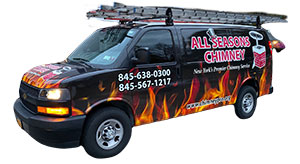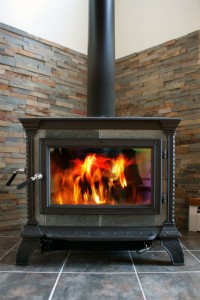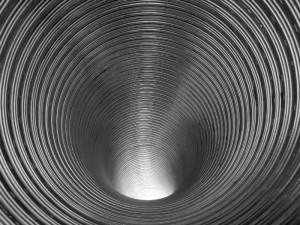Want to save money on your heating bills this winter? Convert your traditional fireplace into an efficient heating appliance with a wood-burning stove. Many people think that they need to switch fuel types to gas to heat more efficiently, but newer technology allows stove manufacturers to create wood-burning units that are even approved for use by the U.S. Environmental Protection Agency (EPA). However, problems can quickly arise to the point of hazardous situations if the stove has not been installed by professional fireplace and chimney technicians, like our staff at All Seasons Chimney. We would like to tell you more about why wood-burning stoves need to be professionally installed to guarantee proper and safe operation.
Why exactly is professional installation so important for wood-burning stoves?
The main installation issue that occurs when installing a new stove into a masonry fireplace deals with the difference between the sizes of the chimney’s flue and the stove’s vent. According to the Chimney Safety Institute of America (CSIA), wood stoves operate at their safest and most efficient when attached to a chimney whose flue size most closely matches the size of the vent pipe that connects the stove to the chimney. The chimney professionals at All Seasons Chimney can ensure this by installing a stainless steel liner from the top of the stove to the top of the chimney.
Are there building codes concerning wood-burning stove installation?
Yes, since 1984, national building codes and standards have required that the connector vent pipe extend from its outlet on the stove, up through the fireplace damper, and to the first flue tile of a masonry chimney. Today, it is recommended to install a stainless steel liner that extends the length of the chimney, from the stove to the top of the chimney.
What kind of problems arise when the flue is not the right size for the stove?
Most often, the flue of a masonry chimney will be much larger than the wood-burning stove. This causes cooler temperatures in the upper walls of the chimney, which sets up the perfect environment for the rapid production of creosote. Occurring naturally as part of the process of burning wood, creosote is highly hazardous and flammable. It can accumulate into dangerously large deposits when the upper walls of the chimney are cool. Cooler chimney walls means more condensation, which means more creosote. This increase in moisture can also leak into the bricks and mortar of the chimney where it can cause expensive damage. A stainless steel liner not only reduces the amount of creosote, but it can also prolong the life of your chimney by protecting it from heat deterioration and corrosion.
You can save a lot of money with a new wood-burning stove, but to save this money, you need to have it professionally installed. Contact us at All Seasons Chimney to learn how we can help you heat your home more efficiently this winter.



